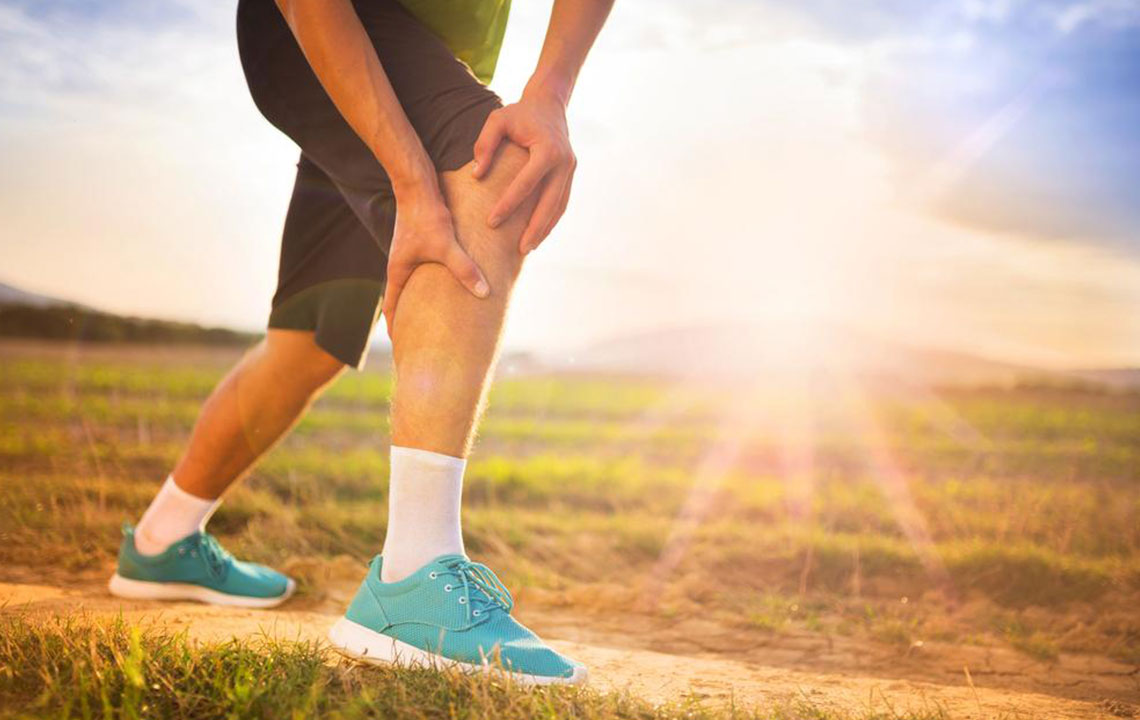6 Reasons that Cause Leg Pain

There are various reasons why people suffer from leg pain. While one of the common leg pain causes is the physical activity such as exercise or sports, some people suffer from leg pain due to some severe illness conditions. Sprains and strains are common due to physical activity.
The ligaments and muscles are the most affected areas due to strains and sprain. The calf muscle, thighs, elbows, etc. are the most affected parts during sprains and strains. Usually, sprains and strains do not require medical care, and some times a spray can help in reducing the swelling and pain.
Here are some of the reasons other than physical activity which cause leg pain:
Peripheral vascular disease
Peripheral vascular disease (PVD) is a disease which is related to the blood vessels. The disease is caused due to blockage, narrowing down of the blood vessels related to heart and brain. This disease can affect arteries, veins, stomach and other parts of the body.
The disease affects the blood vessels where they become barrow which reduces the flow of blood. The arteries get hardened, or blood vessels get spasms which restrict the flow of blood. These blood vessels, arteries, or veins can be affected anywhere in the body and especially when they are affected in the legs, they cause leg pains.
There are two types of PVD known as functional and organic. In functional peripheral vascular disease, the physical damage of the blood vessels is not done. The blood vessels can get narrowed or widen, which can decrease the flow of blood. In the functional PVD, the blood vessels show the response in an extreme way whether it may be widening or narrowing due to the factors such as stress, temperature changes, etc.
Deep vein thrombosis
When one suffers from deep vein thrombosis (DVT), blood clots are formed in blood veins which are deep inside the body. The blood clots are gelatinous in nature, which are formed in the thigh or lower leg and are common leg pain causes. This condition can also occur in other parts of the body which can cause pain those areas.
There are several factors which cause the DVT. The factors such as over weight, smoking, hereditary conditions, etc. are some of the common causes of this condition. Pregnancy is another reason which can lead to DVT as there will be a change in the hormone levels.
Sciatica
The sciatic nerve is the nerve beginning from the spinal cord and running to the tip of the leg. It is the most important nerve, and it affects the sensation of the legs. When there is any stress on the sciatic nerve, the condition called sciatica occurs.
The symptoms of sciatica are the sensation of pain in the back, legs, and buttocks. The severity of the pain can vary from person to person depending upon the intensity of the condition. Sometimes the patient can experience numbness in the legs.
Sciatica can be caused by an injury done to the sciatic nerve, neck, spine, etc. The sensation of pinching pain or needle piercing pain from the back to legs is the main symptom of sciatica. A condition called Herniated disks where the cartilage between the bones of vertebrae is ripped off can cause sciatica. Spinal stenosis, spondylolisthesis, Piriformis syndrome, etc. also cause sciatica.
Sports-related injuries
Sports is fun and interesting, and everyone likes to play sports. The sports can be entertaining but at the same time can cause injuries. Especially children and professional sports players can get injured a lot. The injuries can be normal to severe, and sometimes the injuries go undetected. The undetected injuries can cause severe damage to the nerves, spine, etc. These injuries are the common spine and leg pain causes.
Hypoparathyroidism
Hypoparathyroidism is a condition that causes the decreased production of parathyroid hormone. The function of Parathyroid glands is to regulate the calcium, phosphorus, and vitamin D in the body.
Some of the causes of hypothyroidism are the injury of the parathyroid glands, removal of these glands due to some reason, low magnesium levels, etc. This serious health condition can cause muscle cramps, leg pains, tingling sensation in the legs, burning sensation in the legs, anxiety, depression, etc. It is a rare condition.
Varicose veins
In this condition called varicose veins, the varicose veins become enlarged which get dilated and filled with more blood. This condition makes the varicose veins swollen. The veins also change into bluish or red color. This condition is one of the lower leg pain causes.
The condition occurs as the blood flow is not proper in the veins. In this condition, the blood gets collected in the veins instead of flowing. This causes the enlargement of veins, and this condition usually affects legs. Some of the reasons for varicose veins are obesity, pregnancy, old age, etc.


